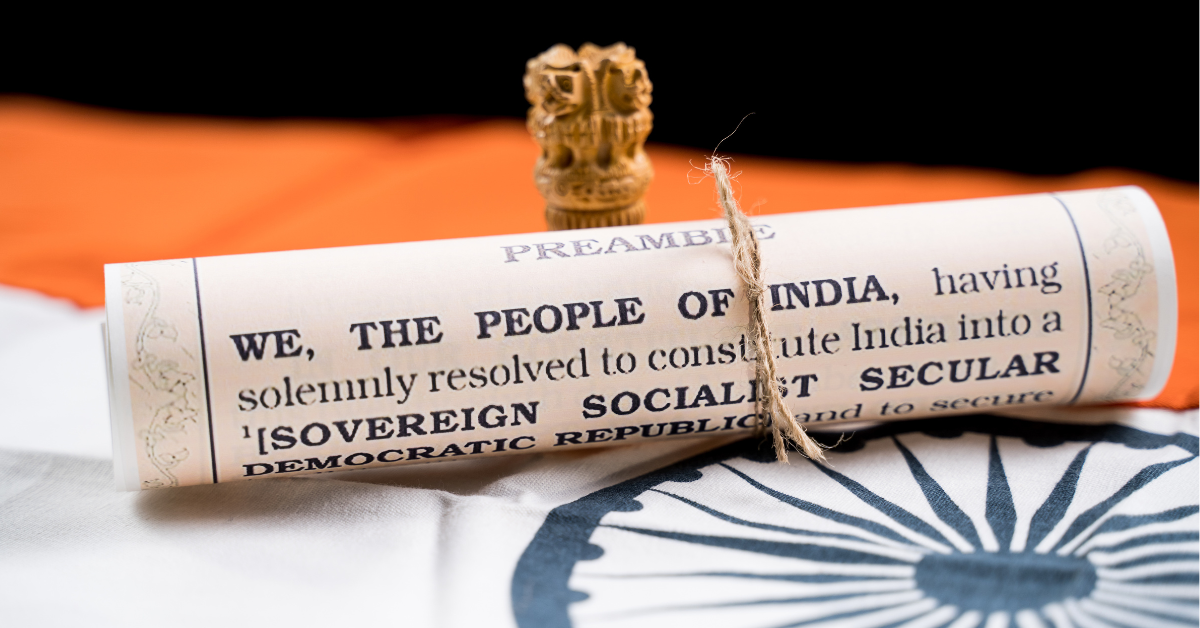As proud citizens of India, we must instill patriotism and civic responsibility in our children from a young age. One of the most important ways to do this is by educating them about the foundation of our nation – the Constitution of India.
The Constitution is more than just a legal manuscript; it’s a testament to the sacrifices, dreams, and aspirations of our forefathers who fought for India’s independence. It’s a living, breathing document that outlines the rights, duties, and principles that govern our country. By teaching our kids about the Constitution, we’re helping them comprehend their rights and responsibilities as citizens and promoting a sense of pride and ownership in their home country.
The Making of the Indian Constitution
The Constituent Assembly drafted the Indian Constitution, led by Dr. B.R. Ambedkar, and came into effect on January 26, 1950. It took nearly three years to draft the longest-written constitution in the world. India’s Constitution is inspired by the ideals of equality, justice, liberty, and fraternity, which were hard-fought for during the Indian independence movement.
Our children need to know about the struggles and sacrifices made by our freedom fighters and how the Constitution culminated their efforts to build a just and unbiased society. By understanding the history behind the Constitution, they’ll develop a deeper appreciation for the rights and freedoms they enjoy today.
What Should Children Know About India’s Constitution?
When teaching children about the Constitution, focus on the key aspects that are relevant to their lives:
- Fundamental Rights: Explain the six fundamental rights that protect their freedoms, such as the right to equality, freedom, and religion.
- Fundamental Duties: Discuss the 11 fundamental duties that every citizen must uphold, such as respecting the Constitution and national symbols and preserving the country’s heritage.
- Preamble: Familiarize them with the Preamble, which outlines the vision and values of the Constitution, such as justice, liberty, and fraternity.
- Secular and Democratic Republic: Highlight that India is a secular and democratic republic where all residents are equal regardless of their religion, caste, or gender.
- Civic Responsibilities: Encourage them to participate in civic activities, such as voting, volunteering, and community service, to contribute to the nation’s progress.
Ways to Teach Children About India’s Constitution
Teaching children about the Constitution doesn’t have to be boring or dry. Here are some engaging ways to make it fun and interactive:
- Read books and watch videos: Encourage them to read age-appropriate books and watch educational videos that explain the Constitution in simple terms.
- Participate in activities: Organize mock elections, debates, and role-playing exercises to help them understand the democratic process and the importance of civic participation.
- Celebrate Constitution Day: On November 26, celebrate Constitution Day by organizing quizzes, essay competitions, and cultural programs that highlight the significance of the Constitution.
- Visit museums and monuments: Take them to museums and monuments that showcase the history of the Indian independence movement and the making of the Constitution.
- Encourage questions and discussions: Encourage an environment where they feel comfortable asking questions and discussing the Constitution and its relevance in their lives.
Conclusion
Teaching children about the Constitution is not just a patriotic duty but also a way to ensure that they grow up to be responsible and engaged citizens. By instilling a sense of pride and ownership in the Constitution, we’re shaping their future and contributing to our nation’s growth and development. Let’s prioritize teaching about the Constitution in our homes and schools and inspire the next generation to uphold the values and principles that make India a great nation.








Be the first one to comment on this story.